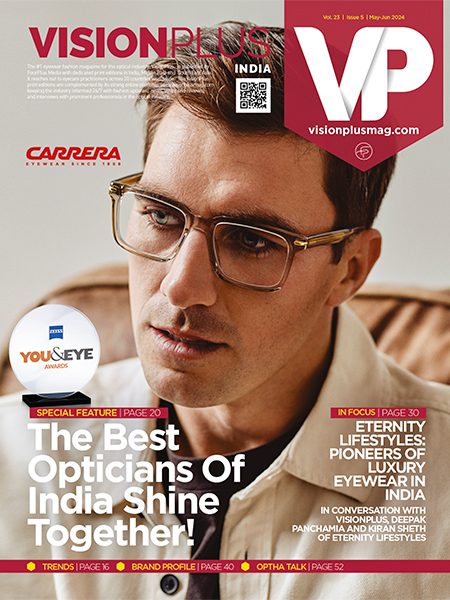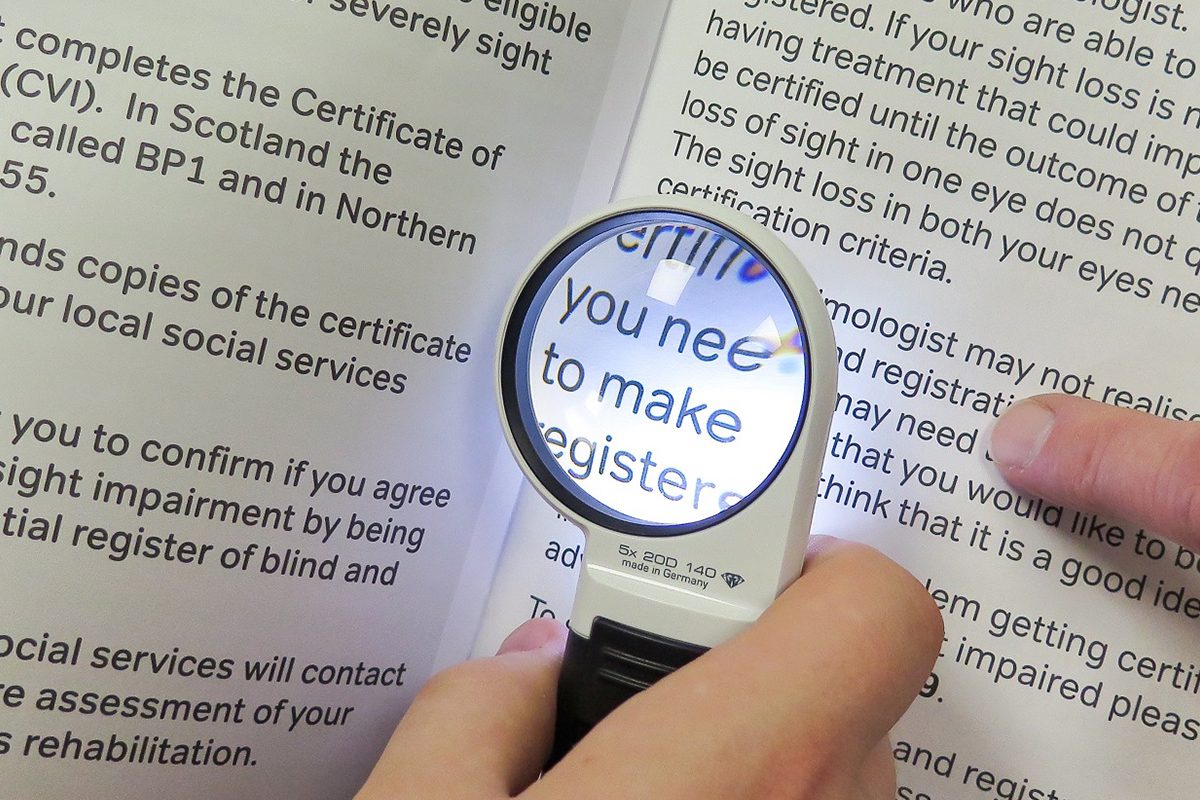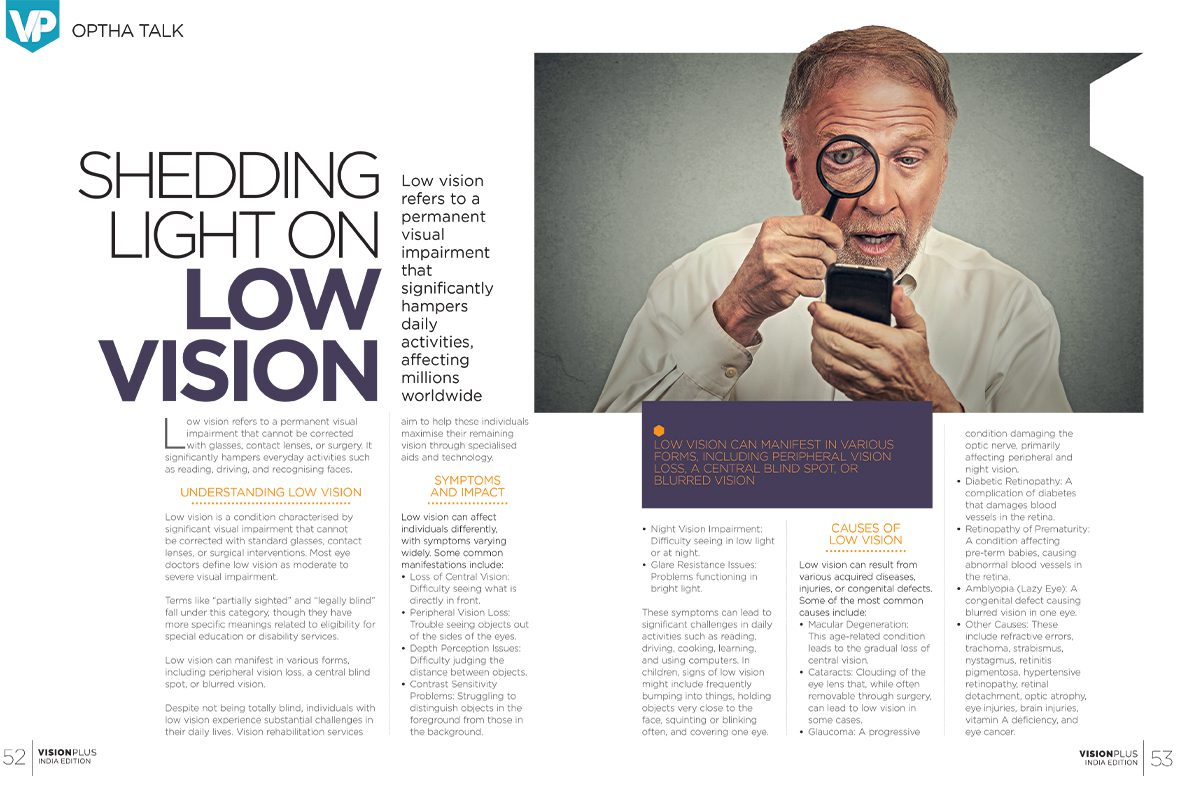
Shedding Light On Low Vision
Low vision refers to a permanent visual impairment that significantly hampers daily activities, affecting millions worldwide
Low vision refers to a permanent visual impairment that cannot be corrected with glasses, contact lenses, or surgery. It significantly hampers everyday activities such as reading, driving, and recognising faces.
Understanding Low Vision
Low vision is a condition characterised by significant visual impairment that cannot be corrected with standard glasses, contact lenses, or surgical interventions. Most eye doctors define low vision as moderate to severe visual impairment.
Terms like “partially sighted” and “legally blind” fall under this category, though they have more specific meanings related to eligibility for special education or disability services.
Low vision can manifest in various forms, including peripheral vision loss, a central blind spot, or blurred vision.
Despite not being totally blind, individuals with low vision experience substantial challenges in their daily lives. Vision rehabilitation services aim to help these individuals maximise their remaining vision through specialised aids and technology.
Symptoms And Impact
Low vision can affect individuals differently, with symptoms varying widely. Some common manifestations include:
Loss of Central Vision: Difficulty seeing what is directly in front.
Peripheral Vision Loss: Trouble seeing objects out of the sides of the eyes.
Depth Perception Issues: Difficulty judging the distance between objects.
Contrast Sensitivity Problems: Struggling to distinguish objects in the foreground from those in the background.
Night Vision Impairment: Difficulty seeing in low light or at night.
Glare Resistance Issues: Problems functioning in bright light.
These symptoms can lead to significant challenges in daily activities such as reading, driving, cooking, learning, and using computers. In children, signs of low vision might include frequently bumping into things, holding objects very close to the face, squinting or blinking often, and covering one eye.

Causes Of Low Vision
Low vision can result from various acquired diseases, injuries, or congenital defects. Some of the most common causes include:
Macular Degeneration: This age-related condition leads to the gradual loss of central vision.
Cataracts: Clouding of the eye lens that, while often removable through surgery, can lead to low vision in some cases.
Glaucoma: A progressive condition damaging the optic nerve, primarily affecting peripheral and night vision.
Diabetic Retinopathy: A complication of diabetes that damages blood vessels in the retina.
Retinopathy of Prematurity: A condition affecting pre-term babies, causing abnormal blood vessels in the retina.
Amblyopia (Lazy Eye): A congenital defect causing blurred vision in one eye.
Other Causes: These include refractive errors, trachoma, strabismus, nystagmus, retinitis pigmentosa, hypertensive retinopathy, retinal detachment, optic atrophy, eye injuries, brain injuries, vitamin A deficiency, and eye cancer.
Management And Treatment
Managing low vision involves a comprehensive approach known as vision rehabilitation. This treatment aims to maximise the individual's remaining vision and help them live as independently as possible. A low-vision specialist conducts a thorough low-vision exam to understand how the condition affects the patient's daily life. Based on this assessment, a personalised treatment plan is developed.
Vision Rehabilitation
Vision rehabilitation may include a variety of resources and support services:
Low Vision Aids and Devices: These include prescription glasses, contact lenses, optical magnifiers, electronic magnifiers, screen readers, large print and high contrast products, and voice-to-text technology.
Practical Training and Support: Occupational therapy, mobility training, rehabilitation instruction, special education, vocational services, counselling, and support groups can significantly enhance the quality of life for individuals with low vision.
Preventing Permanent Vision Loss
While not all causes of low vision are preventable, many are treatable if detected early. Regular eye exams and prompt attention to any unusual vision changes are crucial in preventing permanent vision loss. Early intervention can significantly improve outcomes and slow the progression of many
eye conditions.
The Future Outlook
Looking ahead, the future of low vision holds promise for significant improvements in quality of life. As technologies continue to evolve, individuals with low vision can expect:
Personalised Treatments: Tailored treatment plans based on genetic profiles and individual needs. Improved Devices: Enhanced functionality and integration of AI to provide real-time assistance and adaptation to changing environments.
Better Accessibility: Greater affordability and availability of assistive technologies through advancements in manufacturing and distribution.
While low vision presents considerable challenges, ongoing research and technological advancements offer hope for significant improvements in treatment and quality of life.
As advancements in technology and medical understanding continue to evolve, there is hope for even more effective treatments and support for those living with low vision.







